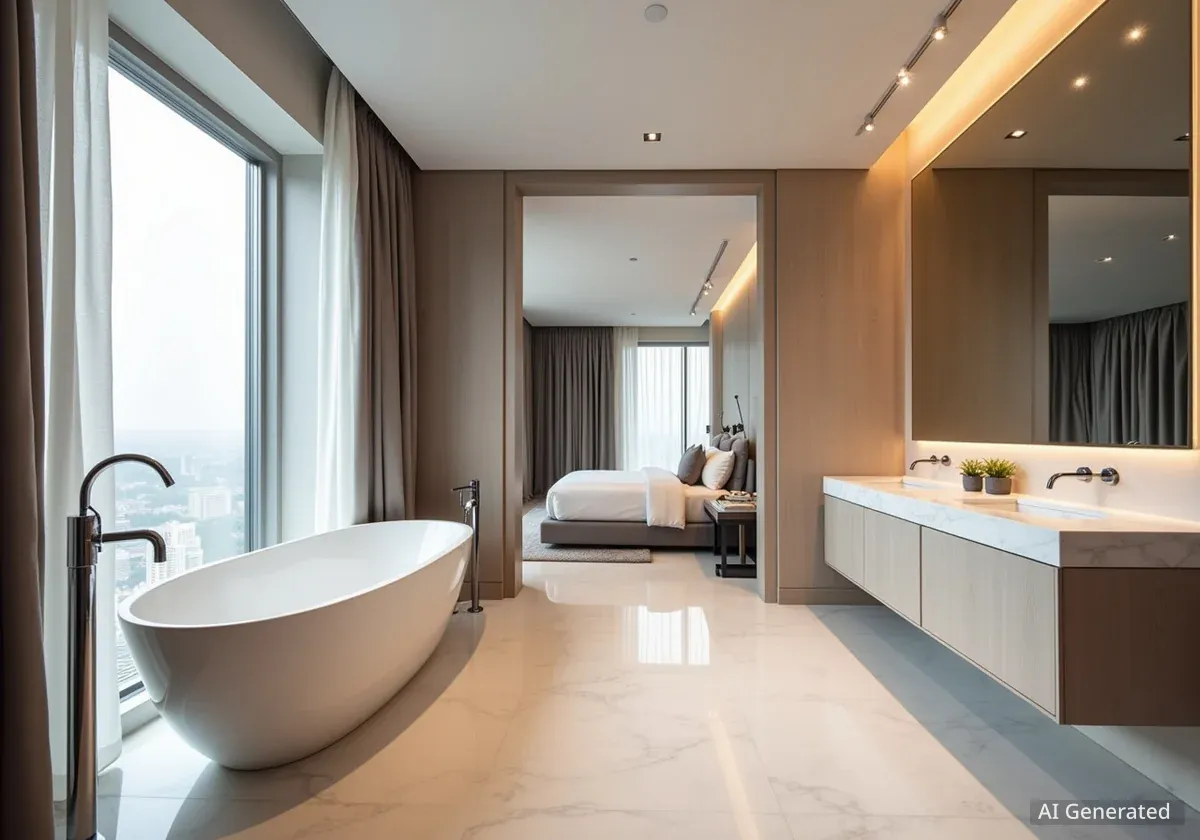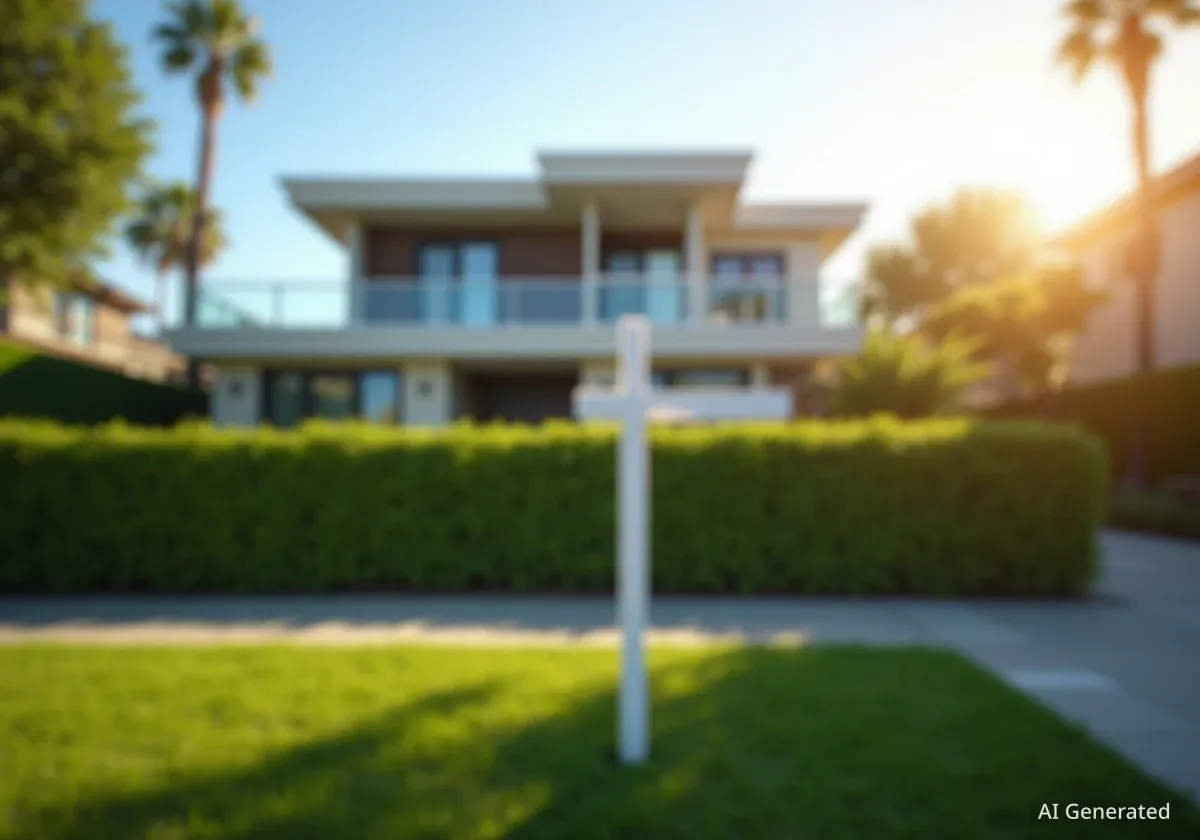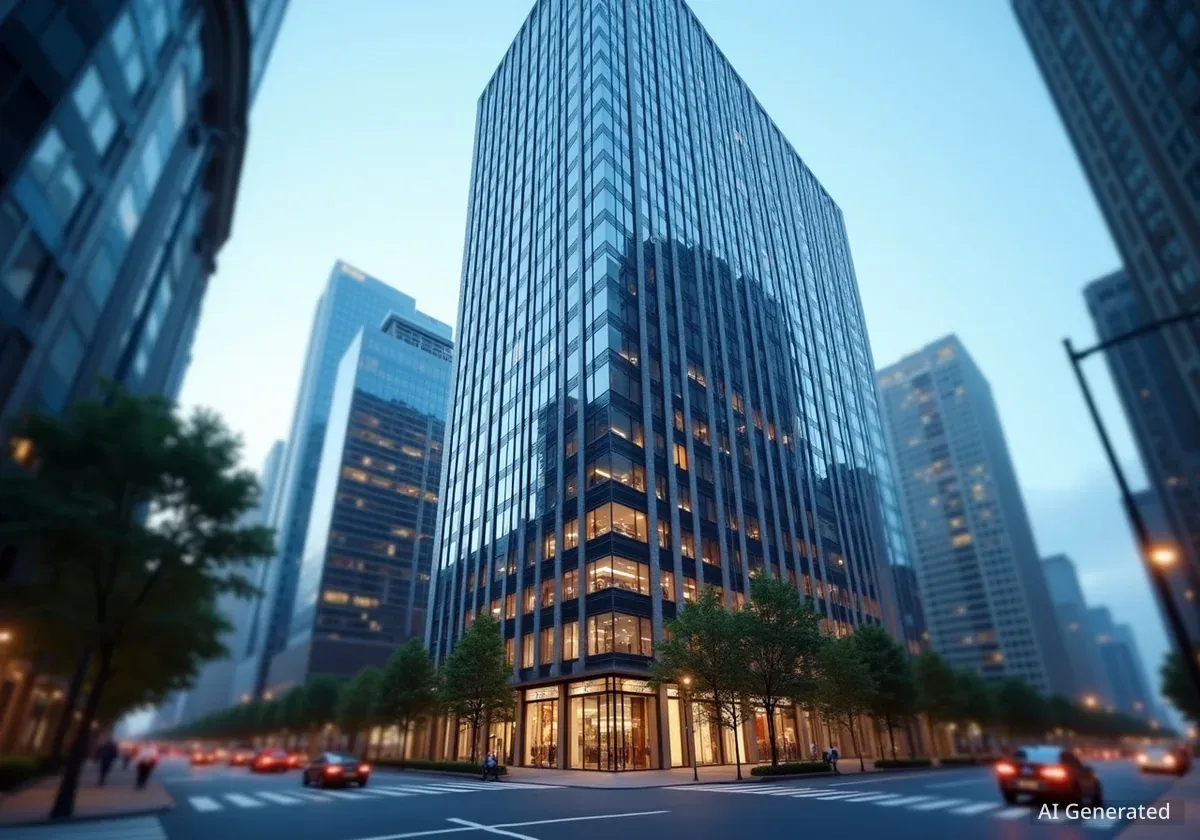In New York City's competitive luxury condominium market, a consistent trend has emerged over the past two decades: for every bedroom, there is typically one bathroom. Despite occasional high-profile listings featuring an abundance of facilities, new data analysis confirms that a one-to-one ratio remains the standard for high-end properties built since 2005.
This finding comes from a detailed review of property data by UrbanDigs, a real estate analytics firm. The analysis suggests that while ultra-luxury apartments may push the boundaries, the broader market for homes priced at $4 million and above adheres to a practical and balanced design philosophy that buyers have come to expect.
Key Takeaways
- Data from UrbanDigs shows Manhattan luxury condos built since 2005 average a one-to-one ratio of bathrooms to bedrooms.
- Properties priced above $12 million have a slightly higher average, with 1.057 bathrooms per bedroom.
- While extreme examples exist, such as units with three more bathrooms than bedrooms, they are not representative of the overall market.
- Real estate experts note that a bathroom for each bedroom is now considered a fundamental feature of modern luxury living.
The Established Benchmark in Luxury Design
For buyers investing millions in Manhattan real estate, certain amenities are non-negotiable. According to recent market analysis, one of the most established benchmarks is the provision of at least one bathroom for every bedroom in a condominium unit. This configuration has become a defining feature of luxury construction over the last 20 years.
John Walkup, the co-founder of real estate data firm UrbanDigs, analyzed sales data for Manhattan condos built after 2005 and priced at $4 million or more. His findings reveal a remarkably stable trend.
"The ratio stays relatively consistent, hovering right around one bathroom per bedroom, regardless of neighborhood or price point," Walkup stated. "Paying more usually means getting more of both."
This consistency indicates a clear market expectation. Developers are responding to a demand for privacy and convenience, where each bedroom functions as a self-contained suite. The half-bath, or powder room, for guests is also a standard addition, but the core design principle remains one full bathroom per bedroom.
What Constitutes a 'Luxury' Condo?
In Manhattan real estate, the term 'luxury' typically refers to properties in prime locations with high-end finishes, extensive amenities (like doormen, fitness centers, and resident lounges), and spacious layouts. Since 2005, a key part of this definition has grown to include an en-suite bathroom for every bedroom, reflecting evolving standards of comfort and privacy.
Data Reveals Nuances Across Price and Location
While the one-to-one ratio is a strong overall trend, the UrbanDigs data highlights subtle variations when broken down by price and neighborhood. These differences shed light on the expectations of buyers at the very highest end of the market.
Analysis by Price Point
The data shows a direct correlation between price and the number of bathrooms per bedroom:
- $4 million - $8 million: The ratio is slightly below one, at 0.981 bathrooms per bedroom.
- $8 million - $12 million: The average rises to 1.009 bathrooms per bedroom, almost perfectly balanced.
- $12 million and above: This segment shows the highest average, with 1.057 bathrooms per bedroom, indicating the inclusion of extra powder rooms or specialized baths becomes more common.
This suggests that as buyers move into the ultra-luxury tier, the expectation shifts from simple convenience to an abundance of facilities, catering to both residents and guests for large-scale entertaining.
An Outlier in the Market
An apartment at 50 West 66th Street, a nearly completed supertall tower, exemplifies the extreme end of the luxury market. The unit, priced at $85 million, is designed with six bedrooms and nine bathrooms. This three-bathroom surplus highlights a design philosophy focused on ultimate convenience and opulence, though it remains an exception rather than the rule.
Geographic Trends in Manhattan
The bathroom-to-bedroom ratio also varies slightly across different parts of Manhattan, reflecting the character and development patterns of each neighborhood.
According to UrbanDigs, Midtown leads with an average of 1.010 bathrooms per bedroom, closely followed by the Upper East Side at 1.001. Downtown properties average 0.998, while the Upper West Side comes in at 0.966. Northern Manhattan, with a different housing stock, has the lowest ratio among the areas studied, at 0.886.
These minor differences may be influenced by the type of buildings prevalent in each area, from sprawling pre-war conversions to modern glass towers, each with different structural possibilities and target demographics.
The Practicality Behind the Numbers
The trend toward more bathrooms is rooted in practical changes in how people live. The expectation for an en-suite bathroom in the primary bedroom has expanded to include secondary bedrooms, which are often used by children, guests, or as home offices that may double as guest rooms.
For families, having multiple bathrooms streamlines morning routines and reduces household friction. For residents who entertain, having dedicated bathrooms for each bedroom ensures guest privacy. The powder room, typically located near the main living area, prevents visitors from needing to enter private bedroom spaces.
Developers understand these functional demands. Building a condo with fewer bathrooms than bedrooms in the luxury category would be a significant marketing disadvantage. As a result, the one-to-one ratio has become less of a selling point and more of a baseline requirement for new construction projects aiming to attract high-net-worth buyers.
Ultimately, the data confirms that while the idea of having nine bathrooms may capture headlines, the reality of the Manhattan luxury market is more pragmatic. The standard remains a balanced, functional layout that provides a dedicated bathroom for every bedroom—a simple formula that has defined luxury living for nearly a generation.





